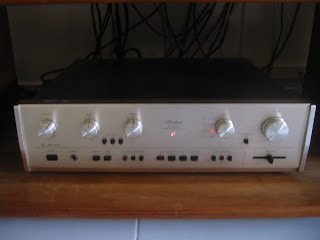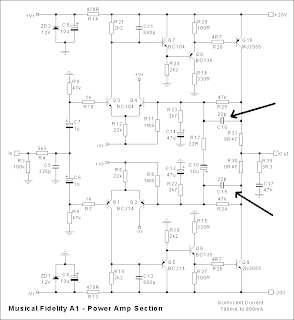The L-410 is a Class-A bias (
first few watts only) integrated amp and it really runs hot. The L410 is a high-power component, and, was previously able to drive my renown power hungry Celestion SL6S with ease.
Before re-cap, you could hear same off-key note from my Emi Fujita album (as per Nait). The offending component was traced to the pair of 'white translucent' 0.047uf non-EC cap on the pre-amp board.
After re-cap using better quality components e.g Wima, OSCON, Panasonic FC, Elna Audio, EPCOS, Siemens, Rubycon, Panasonic ECA, Elna Starget, Nichicon, AVX, silver mica and, Philips BC, the L-410 became truly transparent. Pairs well with my recapped Musical Fidelity Tubalog and Marantz CDA-94.
Please be aware of the bi-polar caps in the power amp section.
I believe the L-410 is Class-A for the first 8W or so (not documented anywhere) as once the volume dial passes just over 9 o'clock you notice it run not as hot as before and the "grunti-ness" increases - in the Luxman tradition of the L-510, etc. The other 'give-away" is the use of the "shark-fin" heatsink normally found in vintage Luxman's which run hot.
The following is a pix of an original L-410 (not mine) which was located on the net.
 |
| Original pix from internet |
The following is my set after almost all the electrolytic (except the pair of 15000uf) and most of the non-EC caps were replaced.
 |
| View from front after recap |
The following is the top view.
 |
| From top |

















































